Dragonflies are among nature’s most agile and ancient predators, yet their behavior often sparks curiosity and fear. One of the most frequently asked questions about them is: Do Dragonflies Attack Humans? While the answer is a clear no, the reasons behind this question are rooted in myths, misconceptions, and the mysterious lives of these fascinating insects.
This comprehensive guide dives deep into the anatomy, behavior, cultural significance, and ecological role of dragonflies, debunking myths while shedding light on their interactions with humans.
Introduction: The Mystique of Dragonflies
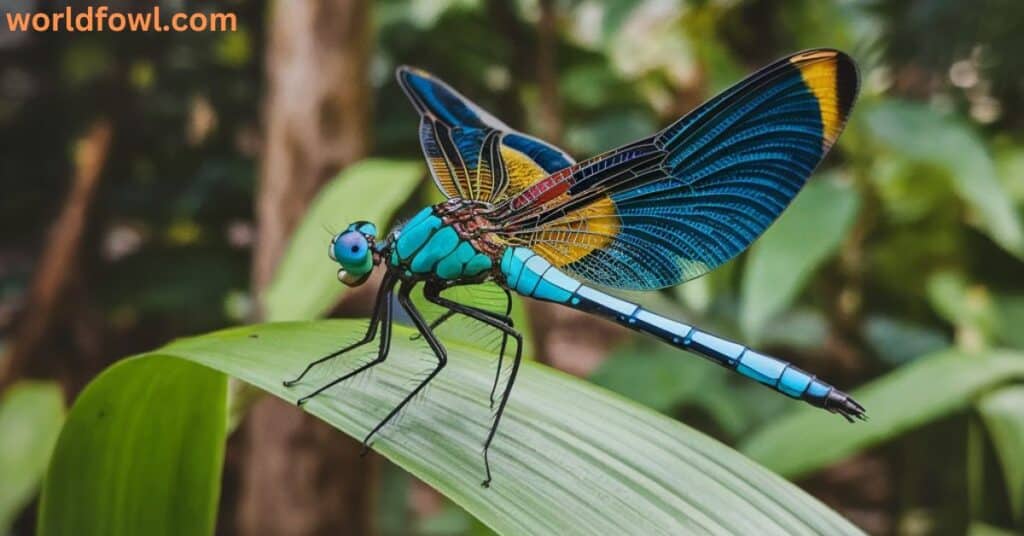
Dragonflies, members of the order Odonata, are among the oldest insects on Earth, with fossil records dating back over 300 million years. These creatures are revered for their vibrant colors, remarkable flight agility, and ecological significance.
Despite their beauty and utility, dragonflies are often misunderstood. Many people fear their rapid movements, sharp mandibles, and proximity to humans, mistakenly believing they are aggressive or harmful. But are these fears justified? Let’s start by understanding their unique biology.
Dragonfly Anatomy: Evolutionary Marvels of Nature
Dragonflies are perfectly adapted for their role as apex predators in the insect world. Their anatomy is a testament to millions of years of evolution, fine-tuning them for speed, precision, and hunting efficiency.
Unique Wing Mechanics
One of the defining features of dragonflies is their two pairs of wings, which can move independently. This ability gives them unparalleled aerial agility.
- Flight Versatility: Dragonflies can hover like helicopters, fly backward, and make sharp turns mid-air.
- Speed: Some species can reach speeds of 30–35 mph, making them some of the fastest insects.
- Silent Movement: Unlike bees or flies, dragonflies glide silently, which aids in ambushing prey.
Multifaceted Vision
Dragonflies have some of the most advanced eyes in the animal kingdom. Their compound eyes, composed of 30,000 individual lenses, cover most of their head, allowing nearly 360-degree vision.
| Feature | Function |
| Motion Detection | Tracks fast-moving prey in real-time |
| Ultraviolet Perception | Enhances visibility in low-light conditions |
| Predator Avoidance | Detects threats from all directions |
Mandibles and Predatory Tools
Dragonflies lack stingers or venom but possess powerful mandibles capable of crushing prey exoskeletons. These mandibles, combined with their speed, make them formidable hunters.
- Prey: Mosquitoes, flies, midges, and other small insects.
- Efficiency: A single dragonfly can consume hundreds of mosquitoes daily, highlighting their importance as natural pest controllers.
See Also : Do Crickets Attack Humans? Myths and Realities!
The Life Cycle of Dragonflies
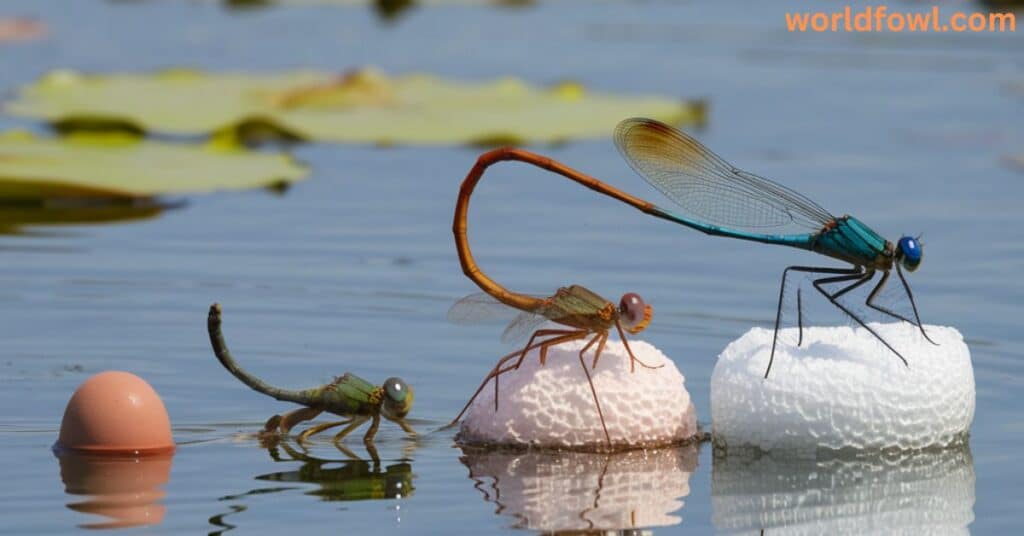
The life cycle of a dragonfly is a fascinating journey that involves dramatic transformations, showcasing their adaptability to both aquatic and aerial environments.
Aquatic Nymph Stage
Dragonflies spend the majority of their lives as aquatic nymphs. During this stage, they are voracious predators, feeding on small aquatic creatures such as mosquito larvae, tadpoles, and even small fish.
- Duration: This stage can last anywhere from several months to several years, depending on the species and environmental conditions.
- Adaptations: Nymphs use extendable jaws, called labium, to snatch prey with lightning speed.
Metamorphosis: From Water to Air
When ready to transition to adulthood, the nymph climbs out of the water, shedding its exoskeleton in a process called emergence.
- Transformation: The once-aquatic creature now has wings and becomes a fully terrestrial predator.
- Challenges: This stage is vulnerable, as the dragonfly is temporarily immobile and exposed to predators.
See Also : Do Cicadas Attack Humans? Myths vs. Facts
Behavioral Insights: What Makes Dragonflies Unique?
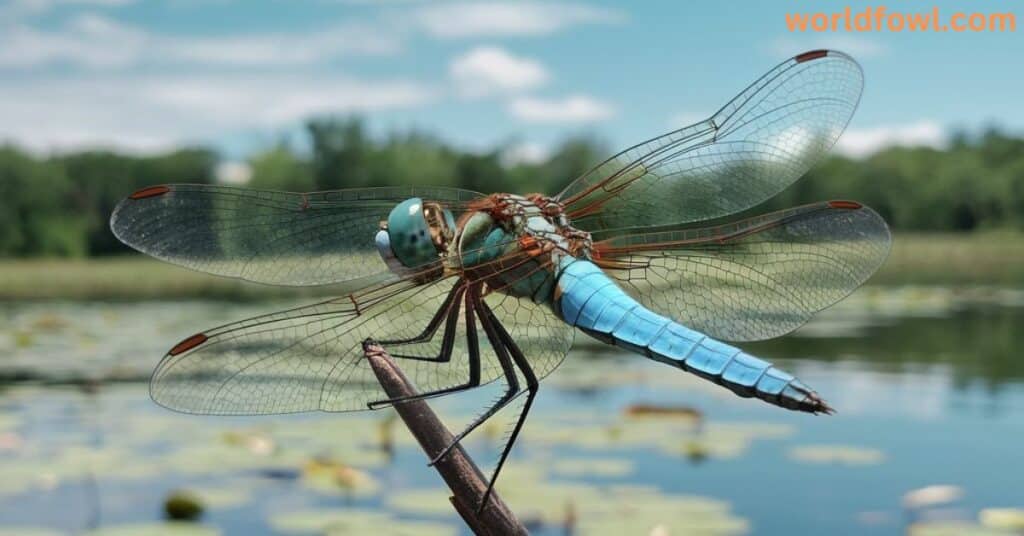
Dragonflies exhibit a range of behaviors that highlight their intelligence and adaptability.
Hunting Tactics and Predatory Precision
Dragonflies are aerial hunters, capturing prey mid-flight with astonishing accuracy.
- Tactics: They form a basket with their legs to scoop prey while flying.
- Success Rate: Studies show that dragonflies catch their prey in over 95% of attempts, a success rate unmatched in the animal kingdom.
Territoriality and Social Interactions
Male dragonflies are highly territorial, often engaging in aerial battles to defend their space.
- Mating Displays: Males perform intricate flight patterns to attract females.
- Habitat Defense: Territories are typically near water sources, essential for breeding.
See Also : Do Praying Mantis Attack Humans? Praying Mantis vs. Humans!
Do Dragonflies Attack Humans? Myths vs. Reality
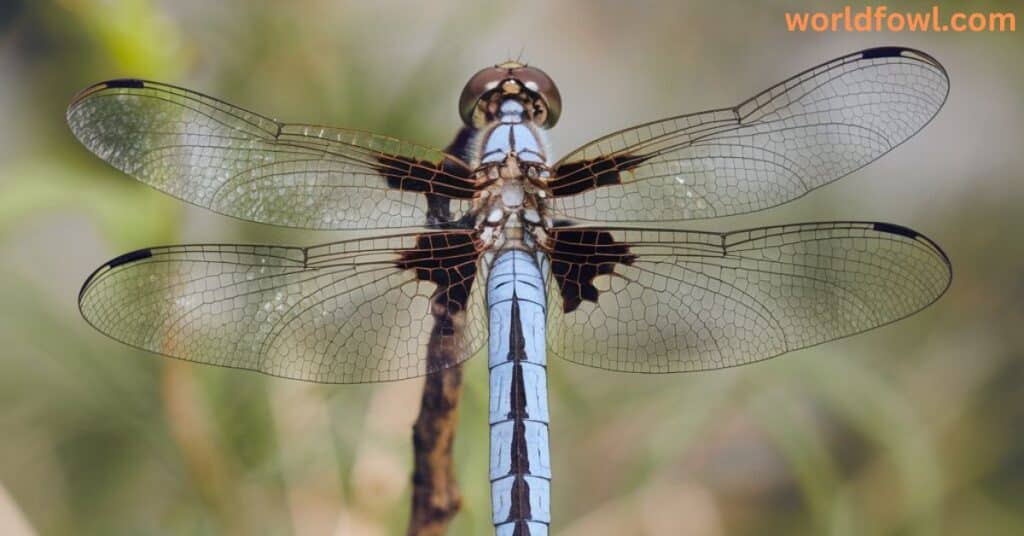
Historical Misconceptions
Dragonflies have long been associated with myths and superstitions, leading to widespread fear.
- “Devil’s Darning Needles”: In European folklore, dragonflies were believed to sew shut the mouths of humans.
- Horse Stingers: Some cultures falsely believed dragonflies could sting horses and humans.
Why Dragonflies Approach Humans
Dragonflies are naturally curious and may fly close to humans for several reasons:
- Light Reflection: They are attracted to shiny surfaces, mistaking them for water.
- Moisture: Sweat or water droplets can draw their attention.
- Inquisitive Nature: Their flight near humans is non-aggressive and harmless.
Cultural Symbolism and Folklore
Dragonflies in Global Myths
- Japan: Seen as symbols of courage, happiness, and strength.
- Europe: Often feared due to superstitions.
Transformation and Strength Symbolism
In modern culture, dragonflies symbolize change, resilience, and hope, reflecting their life cycle and adaptability.
See Also : Can Birds Eat Chia Seeds? (And Should They?)
Dragonflies in Ecosystems
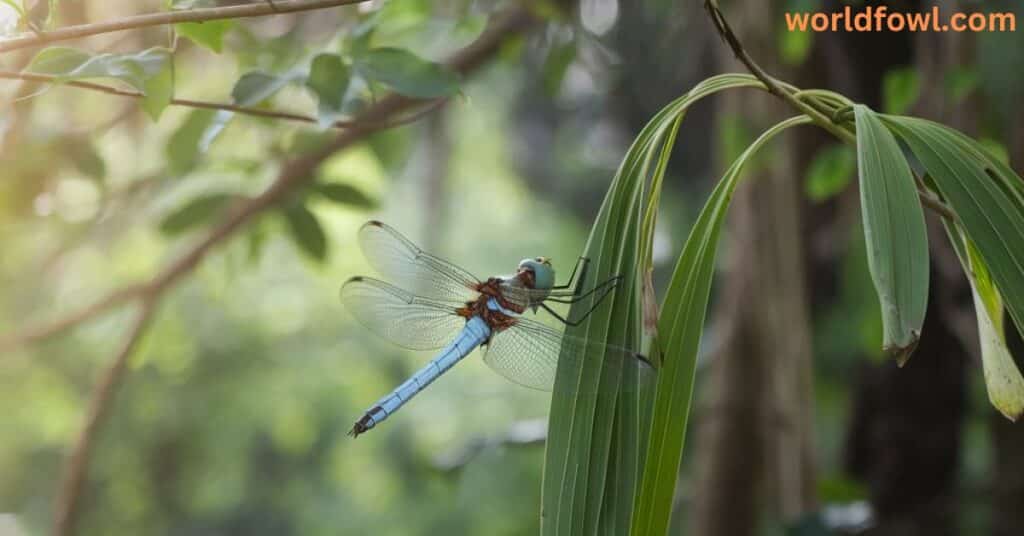
Dragonflies are essential for maintaining ecological balance, serving as both predators and prey.
Pest Control Champions
A single dragonfly can consume up to 300 mosquitoes daily, reducing the need for chemical pesticides.
| Pest | Dragonfly Impact |
| Mosquitoes | Drastically reduces populations |
| Agricultural Pests | Protects crops naturally |
Indicators of Environmental Health
Dragonflies are sensitive to water quality, making them excellent indicators of ecosystem health. Their presence signals clean water and a balanced environment.
How to Attract Dragonflies to Your Garden
Creating a dragonfly-friendly habitat can help reduce pests and support biodiversity.
Creating Ideal Habitats
- Install a Water Feature: Ponds or water gardens are essential for dragonfly reproduction.
- Plant Native Vegetation: Provide shelter and perching spots.
- Avoid Pesticides: Chemicals harm dragonflies and their prey.
FAQs
Can Dragonflies Bite Humans?
Yes, but only defensively, and their bites are harmless.
Do Dragonflies Carry Diseases?
No, they do not transmit diseases to humans.
Why Do Dragonflies Fly Around People?
They’re attracted to light reflection, moisture, or shadows.
Are Dragonflies a Sign of Good Luck?
In many cultures, dragonflies symbolize good luck, transformation, and courage.
Can I Attract Dragonflies to My Garden?
Yes, by creating a pond, planting native vegetation, and avoiding pesticides.
Conclusion: Do Dragonflies Attack Humans?
The idea that dragonflies attack humans is a myth rooted in misconceptions and cultural beliefs. In reality, dragonflies are harmless and incredibly beneficial to humans. They act as natural pest controllers, indicators of environmental health, and symbols of good luck in various cultures.
So, the next time you encounter a dragonfly, take a moment to admire its beauty and appreciate its vital role in our ecosystem. There’s no need for fear—these graceful insects are friends, not foes.

Henry James is a seasoned blogger and a passionate storyteller on “World Fowl.” With years of experience crafting engaging content, he brings a unique blend of expertise and creativity to his writing. Henry specializes in exploring diverse topics with depth and clarity, captivating readers worldwide.






